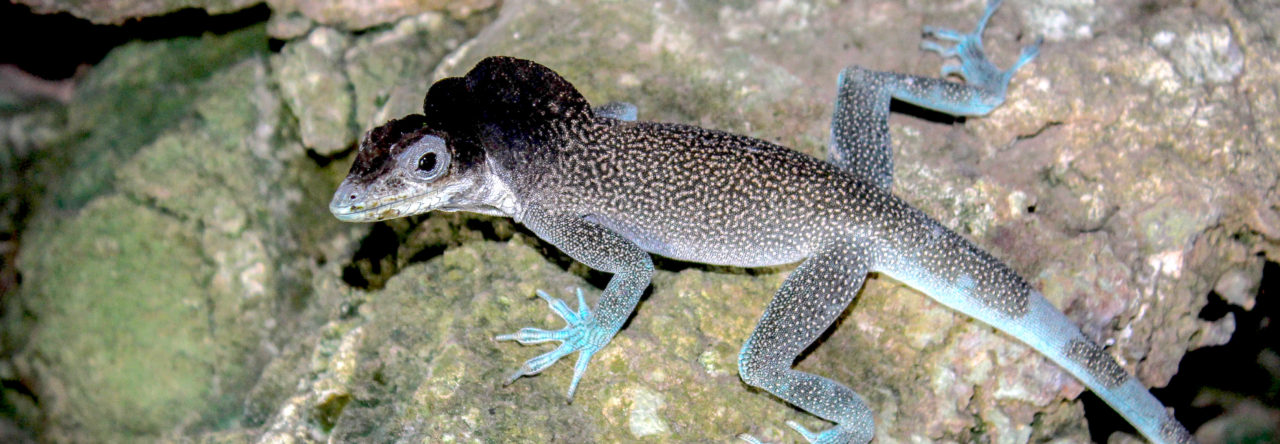Climate change on earth is accelerating. These changes will have important impacts on all species, but some types of organisms are predicted to be affected more strongly than others. One such group is ectotherms which use the temperatures available in surrounding habitats to regulate their body temperatures. Another such group is mountaintop endemics. These species are restricted to one or several mountain peaks by climate and/or competition with other organisms. As such, they cannot easily disperse to other areas if climate makes their current habitat unsuitable!

Mountaintop endemic species may be particularly vulnerable to climate change (Chand Alli, CC BY SA).
Predicting how climate change will impact ectotherms and montane endemics has become a proverbial “hot topic” in recent ecological work, with studies focusing on lizards, salamanders, plants, and insects among other taxa.

Hispaniola contains several high elevation areas home to mountaintop endemic species, including anoles (NASA).
Many studies use correlative modeling approaches (often termed ecological niche models [ENMs] or species distribution models [SDMs]) to assess a species’ current distribution and predict its future distribution by projecting it into simulated future climate scenarios. This approach has some advantages including ease of implementation across many species. However, it has at least two potential drawbacks: the environmental data used in building such models are often measured at a fairly coarse scale that does not represent how many organisms use their environments, and the models do not explicitly include biological processes such as physiology and behavior.
Vincent Farallo, a post doc at Virginia Tech, and his advisor, Martha Muñoz (both moving to Yale in a few weeks!), investigated whether incorporating physiology and behavior into modelling might affect predictions of climate change impacts on two mountaintop endemic anoles of Hispaniola, Anolis armouri and Anolis shrevei. Correlative SDMs (via BioMod2) predicted both species would lose much or all of their suitable habitat under climate change, perhaps leading to extinction. However, when Vincent constructed mechanistic niche models (via NicheMapR) that included knowledge about the thermal physiology and habitat use behavior of these species to predict activity time, they showed that habitat would increase in suitability under climate change, the opposite result! Interestingly, these models also predicted increased suitability for a widespread anole, A. cybotes. This result suggests that while climatic changes may not be a direct threat to these mountaintop anoles, increased competition with another anole, an indirect impact of climate change, may be.

Activity time of Anolis shrevei is predicted to increase across its range in Hispaniola with climate change (Farallo and Munoz).
As a whole, Vincent and Martha’s work shows that incorporating more mechanistic knowledge into models, including physiology and behavior, may be critical to predicting the impacts of climate change on organisms and making sound conservation decisions.



Leave a Reply